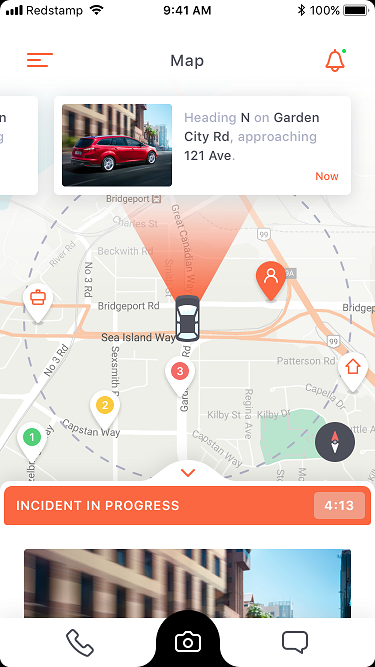By Darren Boyer
In Canada last month, people searched the phrase “aliens on Mars” 370 times. To any rational person, this is at least slightly ridiculous. People also searched for “is the moon made of cheese” 90 times. Even more ridiculous. Searches for “sonny and cher”? — a surprising 4,000 times. I guess the beat does go on.
But people search for everything, right? Nothing is without some tiny spark of interest somewhere, it seems. But do you know a phrase that was searched (at least here in Canada) zero times in that same month?
“stop crime”
Zero. Zilch. Nada. Why?
Is it because no one cares about crime? Certainly that’s not true. Ask anyone who’s had a crime perpetrated against them if they cared about getting their stolen items back, or the perpetrator being brought to justice, and 100% of them will tell you that they care — a whole lot. Ask anyone if they want to lower or prevent crime in their neighborhood, and you’ll hear a resounding yes. So why isn’t anyone searching about how to stop crime? The answer is simple — and it’s not apathy.
It’s helplessness.
Because what happens when a crime occurs? Say your truck is stolen. You call the police. They send someone out (sometimes right away, sometimes eventually) and a policeman knocks on your door. They take a statement, gather information about you and your truck, put it in their system, and the word gets out — but only to other officers. Maybe you’ll get lucky and an officer will ID the truck that same day, but more than likely, you’ll be waiting 2–3 days or more. Meanwhile, your truck is getting trashed and driven who knows where. But the average recovery rate for a stolen vehicle is only 46%, so odds are that you’ll never see your truck again.
But a better day is fast approaching. A future where you report your truck stolen on your smartphone the instant it happens, and 30 minutes later, it’s back in your driveway. This is exactly what happened in Grande Prairie, Alberta on June 23, 2018. And it’s all thanks to a growing Facebook group that not only cares about crime, but stops it — and does it 10 times faster and 100 times cheaper than traditional methods.
The group is called Theft Net Grande Prairie, and it’s grown at an incredible rate in a very short time. In January there were only 15 members. Now, less than a year later, there are over 8,000. It grew organically. It often grew 100% month to month. And it’s still growing. Over 12% of the population is involved, and they’re actually stopping crime. Within the first year alone, over $600,000 of stolen goods were recovered. This is something that is working. Something that people care about and will get involved with.
But most importantly — this solves the problem of helplessness.
And it’s a drop in the bucket. The Facebook group is simply test run. A trial for the actual solution that’s nearing the end of development — an app that will change crime for good. Because the real goal is to put crime fighting in the hands of every single person in the world with a smartphone. It’s called Lightcatch, and it’s coming soon to every phone in the world.
And not in a vigilante way, as some apps have tried, and failed, to do. Lightcatch won’t circumvent the authorities — it works with them — using the power of crowdsourcing and the ubiquity of smartphone cameras to be everywhere all at once to stop crime in real time.
The interface is simple. A crime is reported to the app, either by a user or the police, and a circle around that area is set. Everyone with the app within that circle is notified of the crime immediately. All of a sudden, you have hundreds of eyes on the scene, instead of a police officer or two. Someone sees something related and snaps a picture or sends us a call or text, which marks the location on the map — and a trail begins to form. More evidence builds — a picture of the suspect, an identification from someone who knows him, the license plate number of his car — and it’s all sent over, in real time, to the police. Their job suddenly become a lot easier, faster, and cheaper.

Case times plummet. Recovery rates skyrocket. Criminals are identified and brought to justice.
And why does it work? Because people do care. People care about crime, about the safety of their families. And what’s more, criminals care about social pressure. Put a high-quality smartphone image of a suspect’s face up for all their friends and family to see, and they will stop. Social pressure is, astonishingly, much more of a deterrent to criminals than the threat of jail time or fines.
The test is small, but it’s working. It’s showing that everyone with a smartphone, working together, can do more for crime prevention than anyone ever thought possible. And it’s only going to get bigger. We’ll be telling our grandchildren someday about how bad crime used to be, and they’ll be flabbergasted. The app is in development right now, nearing completion, and when it’s released, it’s going to spread like wildfire.
Lightcatch is coming. Are you ready?
No comments :
Post a Comment